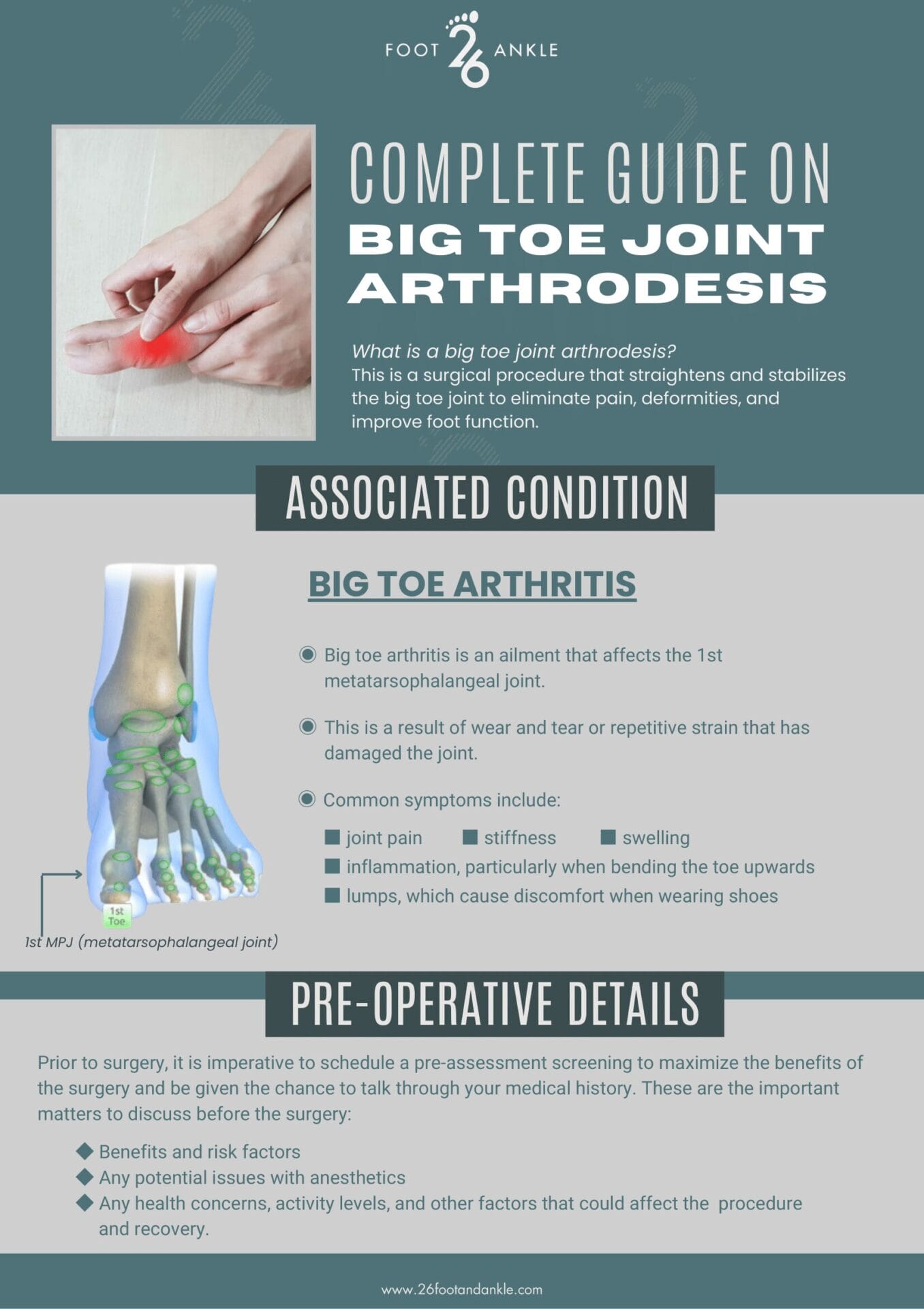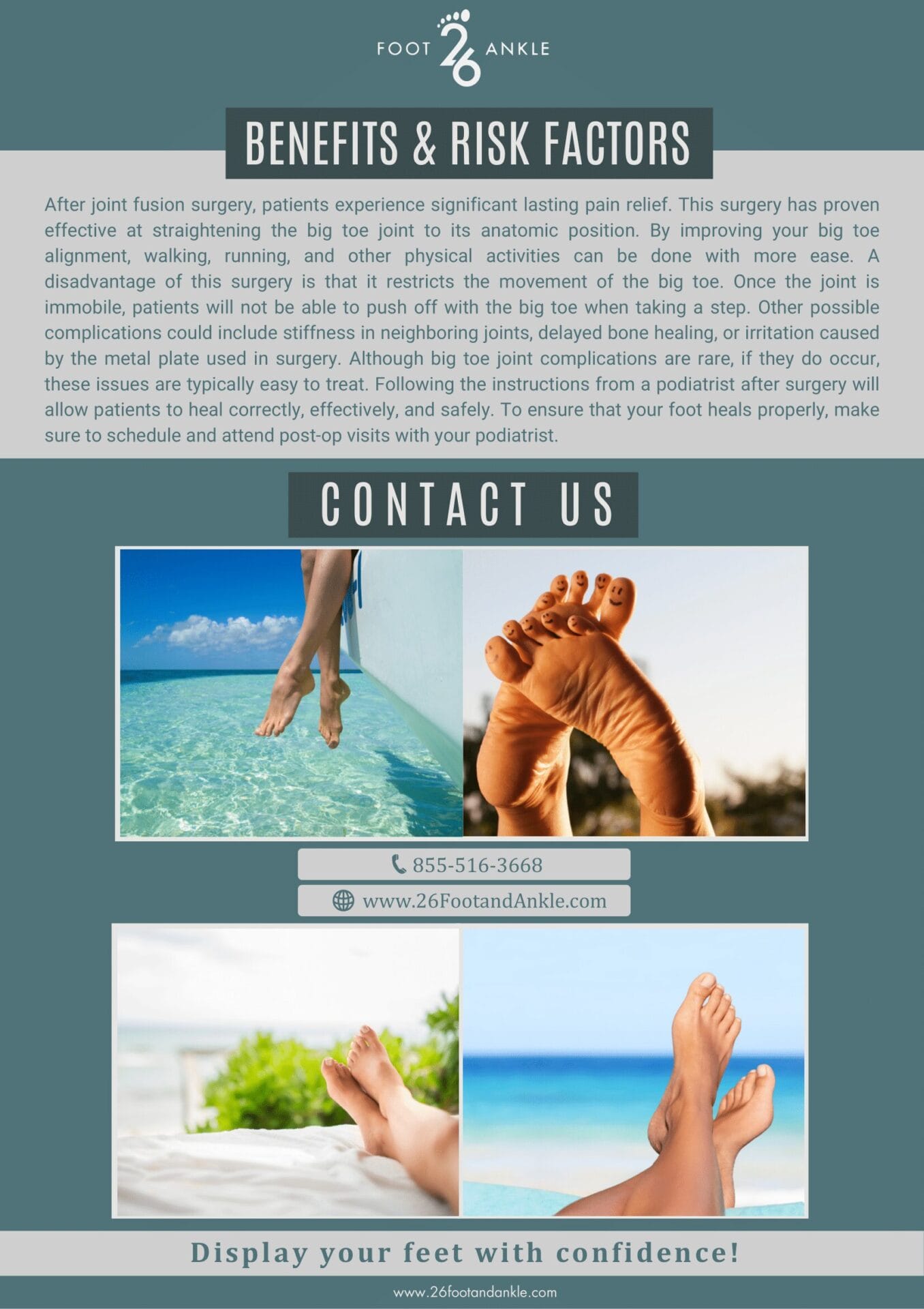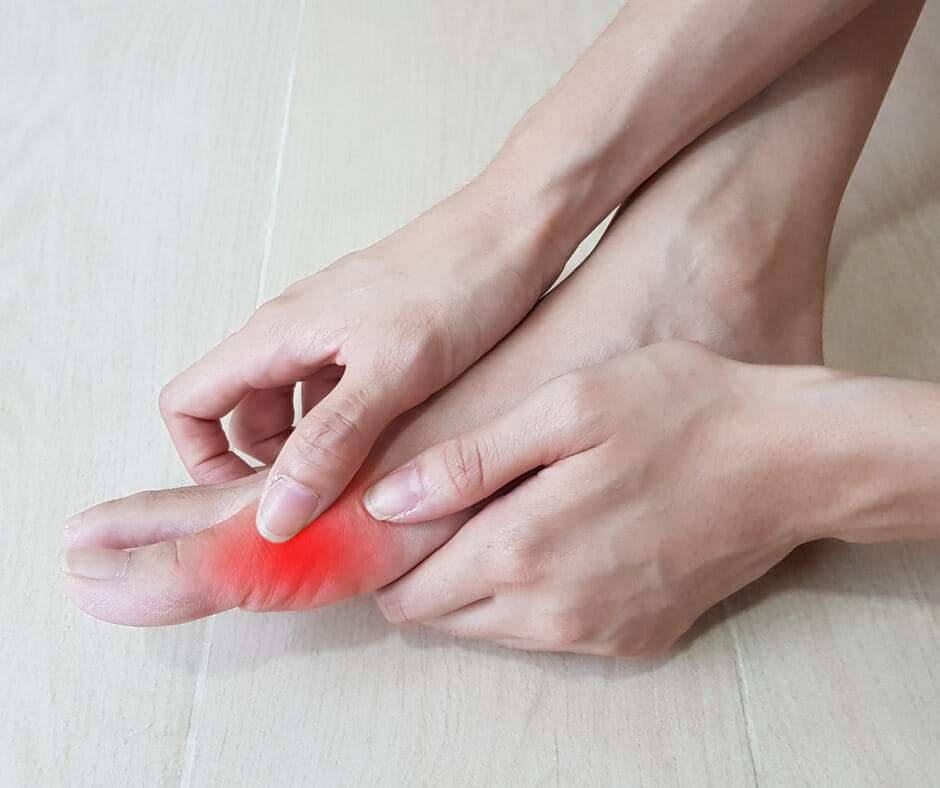The 26 Review
- What is Joint Fusion A surgical procedure that straightens and stabilizes the big toe joint to eliminate pain, deformities, and improve foot function
- How An incision is made on the top of the big toe. The toe joint is then fused together with a tiny plate and/or screws
- Why A predictable and definitive procedure for pain relief
- Recommended for Patients suffering from symptoms of stiffness, swelling, and inflammation not responding to conservative options
- Length of Treatment The surgery takes between 1 to 2 hours to complete depending on the severity of the ailment
- Downtime Outpatient procedure, meaning patients return home after their surgery. 6 weeks of decreased activities in a walking boot until the bone heals
Big Toe Joint: Joint Fusion E-Book


BIG TOE JOINT: JOINT FUSION
Embark on a transformative journey to pain-free living with our latest ebook on Big Toe Joint Fusion. Discover proven strategies and expert advice that can relieve all your big toe discomfort. Your path to renewed mobility begins here — download now and unlock the key to a future where every step is a leap towards comfort and confidence!

Let’s take a closer look…
Found in one or both feet, big toe arthritis is an ailment that affects the metatarsophalangeal (MTP) joint. Big toe arthritis may be the result of wear and tear or repetitive strain that has damaged the joint. Common symptoms to look out for are joint pain, stiffness, swelling, and inflammation, particularly when bending the toe upwards. Lumps can appear on the joint causing discomfort when wearing shoes. This procedure can also help patients suffering from big and smaller toe deformities, such as mallet toe, claw toe, and hammer toe. During the surgery a medical professional will create a small incision on the top of the big toe, granting them access to the extent of the arthritis. While the big toe is accessible, inflamed joint lining and cartilage will be removed, so that a stabilization plate and screws may be inserted. After the surgery, the big toe will be stitched up and patients will be able to return home shortly after their procedure. If you or someone you know suffers from any of the previously listed symptoms consider speaking with a Podiatrist to determine if surgery is right for you.
Procedure Details: Pre, During & Post Surgery Expectations
Prior to surgery, it is imperative to schedule a pre-assessment screening to maximize the benefits of the surgery and be given the chance to talk through their medical history. It is important to mention any potential issues with anesthetics at this time. Although not required, it is highly recommended to stop smoking for at least 8 weeks leading up to surgery due to smoking affecting one’s ability to heal quickly and safely. On the day of the appointment, a medical professional will apply a numbing agent around the toe, in company with light, monitored anesthesia to keep patients comfortable during the procedure. To ensure the procedure goes as smoothly as possible, inform your podiatrist of any health concerns, activity
levels, and any other factors that could affect the procedure and recovery.
During the procedure, a surgeon will create a small incision on top of the big toe. Once the joint is exposed it will be examined to determine the severity of the damaged area. Regardless of the ailment that led to this fusion, a surgeon will then remove the damaged joint lining, cartilage, and any bumps of bone surrounding the joint. Following the extraction, the metatarsal bone will then be attached to the phalanx bone and held firmly with a metal screw and possibly a plate. Utilizing screws and plates allows for the 2 bones to stay stable as the bone heals. Once the surgery is completed, sutures will be placed to close the incision. Joint fusion surgery usually takes anywhere between 1 to 2 hours, but this may vary depending on the severity of the situation.
Following surgery, patients will be taken to the post-operative area, where they will remain until they are awake, alert, and safe to return home. All patients are required to have a friend or family member drive them home post surgery. It is common to have some mild bruising, soreness, and swelling after the surgery is completed. To avoid this, patients should rest as much as possible and keep their affected leg raised above the heart. After two weeks, bulky dressings and stitches will be removed and patients will receive a splint for alignment and exercises to help with recovery. 2 weeks post-op, patients can begin putting weight on their affected foot in a walking boot, but patients should be aware that their foot will likely still be swollen. Around 3 months post-op patients can return to low impact sports. Some swelling may remain at this point, but a year after your operation healing should be complete and any remaining swelling will have disappeared.
Benefits and Risk Factors
Like most surgeries there are significant benefits and drawbacks revolving around this procedure. After joint fusion surgery patients experience significant pain relief that lasts. This surgery has proven effective at straightening the big toe joint to its original position. Accompanied with these benefits, by improving your big toe alignment, walking, running, and other physical activities can be done with more ease. A disadvantage of this surgery is that it restricts the movement of the big toe. Once the joint is immobile patients will not be able to push off with the big toe when taking a step. Other possible complications could include stiffness in neighboring joints, delayed bone healing, or irritation caused by the metal plate used in surgery. Although big toe joint complications are rare, if they do occur these issues are typically easy to treat. Following the instructions from a podiatrist post surgery will put patients in a better position to heal correctly, effectively, and safely. As mentioned before, patients will be allowed to resume most physical activities after 3 months. After 12 months, the big toe will be fully recovered. To ensure that your foot heals properly, make sure to schedule a post-op visit with your podiatrist.